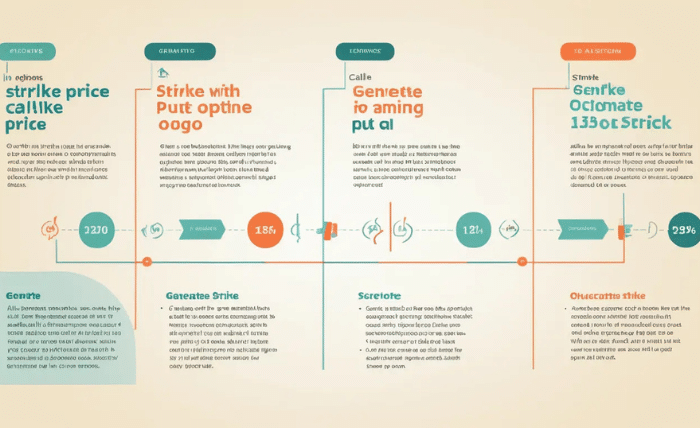Finnifty Future: Insights on NSE and Strike Prices

The world of stock markets is filled with opportunities, and the Finnifty Future is one exciting segment you need to know about. If you’re someone looking to understand the basics or dive deeper into Finnifty NSE and Finnifty strike prices, this guide is your starting point. Let’s explore these concepts in a simple and easy-to-understand way.
What is Finnifty Future?
The Finnifty Future, also known as the Financial Index Future, is a financial instrument tied to the movement of the NSE Financial Services Index. It includes major banks, insurance companies, and other financial services players in India. Traders and investors use it to predict market trends and manage risks effectively.
A future is essentially a contract. In this case, the contract is based on the Finnifty Index, where buyers and sellers agree on a price today for a transaction that will happen in the future. This makes it a popular choice for traders who want to speculate or hedge their portfolios.
Why is Finnifty Future Popular?
- Volatility: The Finnifty NSE represents financial companies, which often experience sharp price movements, creating opportunities for profit.
- Liquidity: The high trading volume ensures easy entry and exit.
- Diversification: Finnifty offers exposure to multiple financial companies in one index.
Understanding Finnifty NSE
Before diving deeper into the Finnifty Future, it’s essential to grasp what Finnifty NSE represents. The NSE Financial Services Index, or Finnifty, tracks the performance of leading financial companies in India. This includes top banks, Non-Banking Financial Companies (NBFCs), insurance firms, and others in the financial sector.
Key Features of Finnifty NSE
- Broad Representation: It includes companies from banking, insurance, and other financial services, offering a complete view of the financial market.
- Well-Balanced Index: The weightage of companies is based on market capitalization, ensuring fair representation.
- Dynamic Adjustments: Companies are added or removed based on their performance to keep the index relevant.
How to Trade Finnifty Future on NSE
Trading Finnifty Future on NSE is straightforward. Here are the steps:
- Open a Trading Account: Ensure you have a trading and Demat account with a broker who provides access to NSE.
- Learn Market Trends: Analyze the movement of the Finnifty Index to predict future trends.
- Decide Your Strategy: Choose whether you’ll speculate on price movements or hedge against risks.
- Place an Order: Use your broker’s trading platform to buy or sell Finnifty Futures.
Remember, trading requires understanding, patience, and discipline. Keep learning to sharpen your skills.
What Are Finnifty Strike Prices?

A strike price in the context of Finnifty Futures refers to the predetermined price at which the future will be settled. It’s crucial for traders to choose the right strike price to maximize their gains or minimize losses.
Tips to Understand and Use Strike Prices
- Assess the Market: Know where the current market price of the Finnifty Index stands.
- Set a Goal: Are you hedging risks or aiming for profits? This will guide your strike price choice.
- Pick the Right Expiry: Futures contracts have expiry dates. Choose one that aligns with your trading goals.
- Analyze Trends: Use technical analysis to spot market trends and make informed decisions.
Benefits of Trading Finnifty Future
Hedging Risks
If you hold a portfolio of financial stocks, trading Finnifty Futures can help you protect against sudden market movements.
Speculative Gains
Traders can predict market direction and profit from the price changes in the Finnifty Index.
Cost-Effective Diversification
Instead of buying shares of multiple companies, you can gain exposure to a whole sector by trading Finnifty Futures.
High Liquidity
The volume of trades in Finnifty NSE ensures that you can buy or sell your positions quickly without much price slippage.
Risks to Watch Out For
While there are many benefits, trading in Finnifty Futures also comes with risks:
- Market Volatility: Price fluctuations can lead to losses if predictions are incorrect.
- Leverage Risks: Futures trading involves leverage, amplifying both gains and losses.
- Knowledge Gap: Lack of understanding about the market can lead to poor decisions.
To reduce risks, always educate yourself and use stop-loss orders to limit potential losses.
How to Get Started with Finnifty Future Trading
Learn the Basics
Start with understanding how the stock market and futures trading work. Resources are available online for free.
Use a Demo Account
Many brokers offer demo accounts where you can practice trading without using real money. This is a great way to learn without financial risk.
Follow Market News
Keep an eye on financial news, especially updates about the companies in the Finnifty NSE. Market sentiment often drives price movements.
Start Small
When you’re ready to trade with real money, begin with small amounts. Gain experience before committing larger sums.
Frequently Asked Questions about Finnifty Future
Q1. What is the expiry date of Finnifty Futures?
Finnifty Futures typically expire on the last Thursday of the month. If that day is a holiday, the expiry is moved to the previous trading day.
Q2. Can beginners trade Finnifty Futures?
Yes, beginners can trade, but it’s crucial to start small and gain knowledge. Use demo accounts to practice before investing real money.
Q3. How is the Finnifty Strike Price decided?
The strike price is determined based on the current market value of the Finnifty Index and market participants’ expectations of future price movements.
Q4. Is trading Finnifty Future risky?
All trading involves risk. However, understanding the market and using risk management strategies can help minimize potential losses.
By now, you should have a good understanding of Finnifty Future, Finnifty NSE, and Finnifty Strike Prices. These concepts are not as complex as they seem once you get familiar with the basics. Always stay updated with market trends, practice regularly, and invest wisely. Happy trading!





